Description
The Teardrop Butterfly Pacific, also known as Chaetodon unimaculatus, is a visually striking fish with a unique and captivating appearance. It features a vibrant yellow body with a distinct teardrop-shaped marking. The maximum size of this butterflyfish species can reach up to 7 inches (17.8 cm) in length, making it a moderate-sized fish for aquariums.
Natural Habitat:
In their natural habitat, Teardrop Butterflyfish are commonly found in the warm tropical waters of the Pacific Ocean. They inhabit reef environments, particularly areas with rich coral growth and rocky formations. These fish can be found in moderate depths, typically between 10 and 50 feet, where they seek shelter and forage for food.
Keeping the Teardrop Butterfly Pacific Healthy:
The care level for the Teardrop Butterfly Pacific is considered moderate, requiring a well-maintained aquarium with stable water conditions. It is crucial to maintain appropriate water parameters, including a temperature range of 75°F to 82°F (24°C to 28°C) and a pH level between 8.1 and 8.4. Regular water testing and quality filtration are essential for their well-being.
Special Requirements and Feeding:
Teardrop Butterfly Pacific fish have specific dietary requirements. They are primarily carnivorous and should be fed a varied diet consisting of high-quality marine-based foods. Suitable options include frozen or live foods like brine shrimp, mysis shrimp, and small pieces of chopped seafood. It is important to provide multiple feedings throughout the day to ensure their nutritional needs are met.
How Many Should I Keep?
It is generally recommended to keep Teardrop Butterfly Pacific fish individually or in pairs. While they can be kept in small groups, they may become territorial and exhibit aggressive behaviour towards conspecifics or similar-looking species.
Lighting Preference:
Teardrop Butterfly Pacific fish thrive in aquariums with moderate to high lighting levels. Adequate lighting not only enhances their vibrant colours but also supports the growth of any live corals or other photosynthetic organisms within the tank.
Suitable Tank Mates:
When considering tank mates for the Teardrop Butterfly Pacific, it is important to select peaceful and compatible species. Avoid aggressive or territorial fish that may harass or compete with the butterflyfish. Suitable tank mates include other peaceful community fish, such as tangs, gobies, anthias, and certain wrasses.
Reproduction in the Wild:
These fish are known to form monogamous pairs during the breeding season, where a male and female come together to mate and produce offspring.
The breeding season for Teardrop Butterfly Pacific fish varies depending on their geographical location and environmental conditions. In some areas, it may occur during specific months of the year when water temperatures and other factors are optimal for reproduction. During this time, the fish become more active and display courtship behaviours to attract a mate.
Courtship in Teardrop Butterfly Pacific fish involves various displays and rituals performed by the male to impress the female. These behaviours often include fin flaring, vibrant colour displays, chasing, and courtship dances. The male vigorously defends his territory from other males and attempts to court a receptive female.
Once courtship is successful, the male and female engage in spawning. The female releases eggs into the water column, while the male simultaneously releases sperm to fertilize the eggs. The eggs are buoyant and float in the water, allowing them to drift with the current. This increases the chances of dispersal and reduces the risk of predation.
After fertilization, the eggs develop into larvae, which undergo a pelagic phase where they drift with ocean currents. During this time, the larvae feed on planktonic organisms and gradually grow and develop. The larvae go through several stages of growth and metamorphosis before eventually settling on the reef as juvenile fish.
Breeding of Chaetodon unimaculatus:
Breeding Teardrop Butterfly Pacific fish, or Chaetodon unimaculatus, in an aquarium setting can be a challenging endeavour. However, for those who are experienced and dedicated, it is possible to replicate some aspects of their natural breeding behaviour.
- Set up:
To encourage breeding, provide a spacious and well-established aquarium with plenty of live rock or coral formations. Maintain stable water parameters, including a temperature range of 78°F to 82°F (25.5°C to 27.8°C) and a pH level between 8.1 and 8.4. Adequate lighting and the presence of hiding spots are also important.
- Courtship/Spawning:
During the courtship phase, the male Teardrop Butterfly Pacific fish will display a series of behaviours to attract the attention of the female. These behaviours may include vigorous chasing, fin displays, and territorial defence. Once courtship is successful, the pair will engage in spawning, releasing eggs and sperm into the water column.
- Rearing:
The eggs of the Teardrop Butterfly Pacific are buoyant and will float in the water. After spawning, it is crucial to provide a separate rearing tank to prevent the eggs from being eaten by the adults or other tank inhabitants. The rearing tank should have suitable water conditions, including appropriate temperature and water quality parameters. The eggs will hatch into larvae, which will then go through various stages of development before becoming juveniles.
Sexual Dimorphism:
Teardrop Butterfly Pacific fish do not exhibit significant sexual dimorphism, meaning it is challenging to visually differentiate between males and females based on their physical characteristics alone. Both sexes share similar colouration and markings.
Distribution:
The Teardrop Butterfly Pacific (Chaetodon unimaculatus) is naturally distributed in the Indo-Pacific region, including the Red Sea, East Africa, and the Central Pacific. While some specimens may be available as captive-bred or line-bred strains, the original fish in the wild are found in these areas.
Summary:
The Teardrop Butterfly Pacific (Chaetodon unimaculatus) is a visually captivating fish species known for its striking appearance. While caring for them can be moderately challenging, providing appropriate water conditions, suitable tank mates, and a varied diet can help ensure their health and well-being. Breeding this species in an aquarium requires specific set-up, courtship behaviours, and separate rearing tanks. While they do not exhibit significant sexual dimorphism, they are naturally distributed in the Indo-Pacific region.
The Fish pictured here are representative only and the livestock you receive may vary in pattern, coloration, and shape.

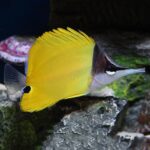
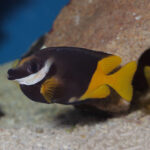



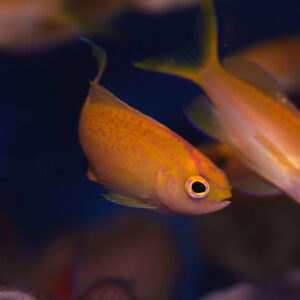
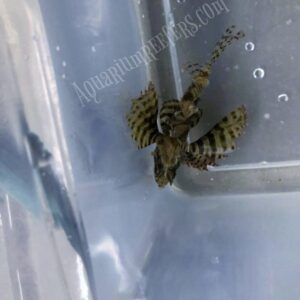
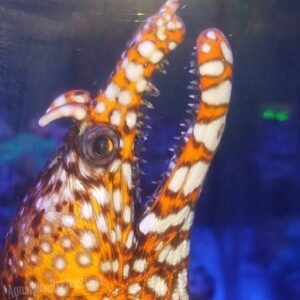
 NYOS Absolute Aminos
NYOS Absolute Aminos